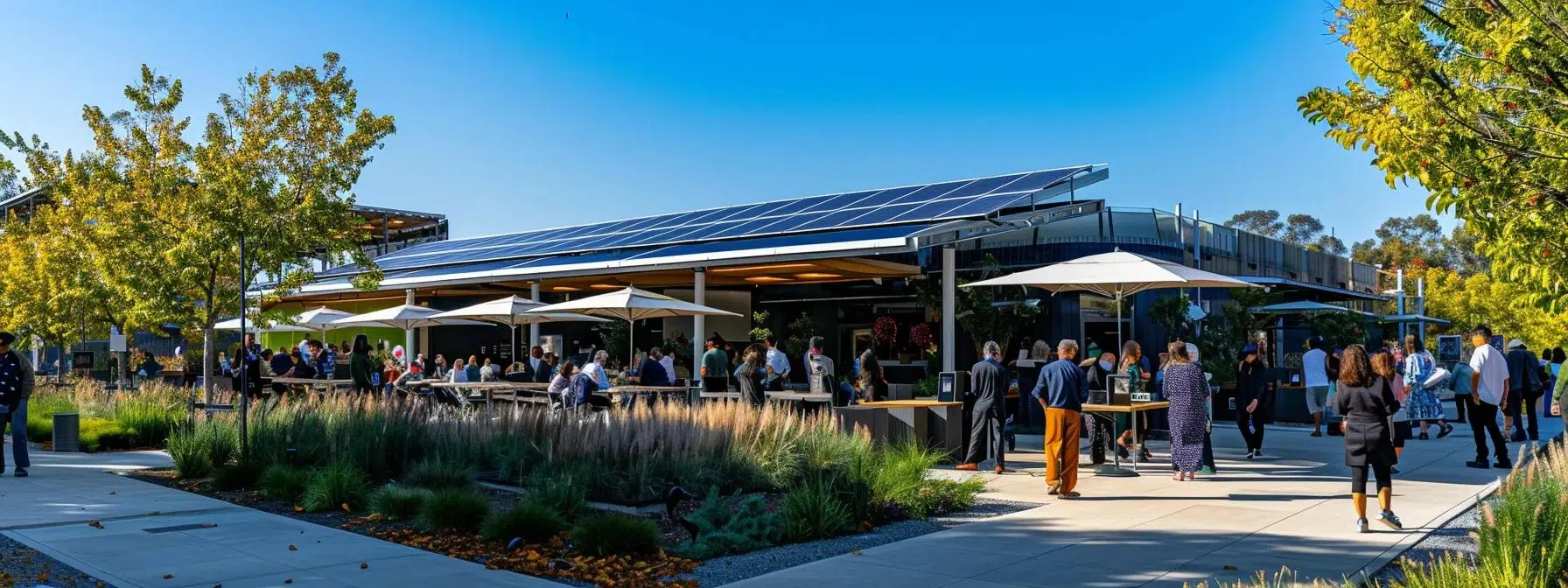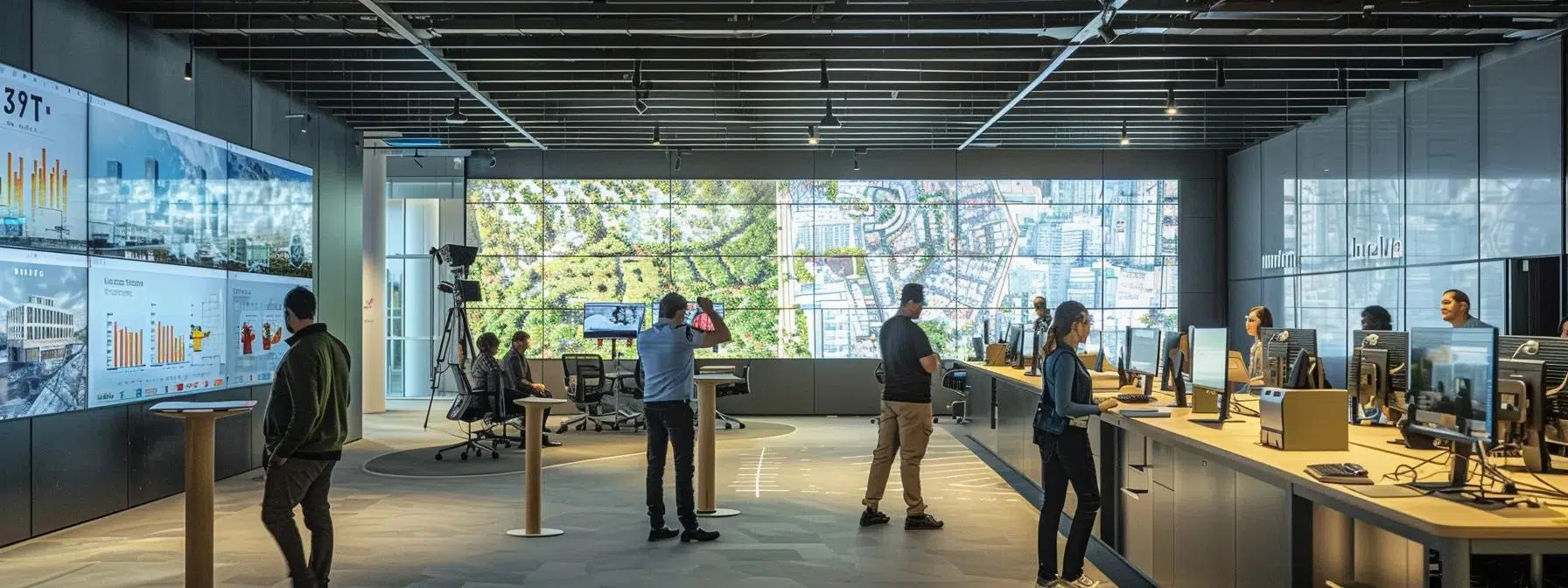Outdoor events thrive when sustainability becomes part of the planning blueprint. From powering stages with solar energy to offering fresh, local meals in compostable packaging, today’s event organizers have the tools to reduce environmental impact without compromising experience. Climate-focused strategies lead to smoother logistics, safer conditions, and stronger guest satisfaction. This guide shares practical solutions that elevate outdoor events through smart design, responsible sourcing, and resilient infrastructure.
Key Takeaways
- Sustainable venues lower emissions through energy-efficient design and smart location choices.
- Renewable energy sources keep outdoor events powered without polluting the environment.
- Efficient waste systems and local catering reduce food miles and landfill output.
- Emission tracking tools guide planners toward practical sustainability improvements.
- Verified carbon offset programs help events reach net-zero goals.
- Climate solutions directly improve guest safety, comfort, and brand credibility.
What Are the Most Impactful Climate Solutions for Outdoor Events?

Effective climate solutions reduce energy waste and manage emissions while promoting sustainability. Innovations like renewable energy installations, waste management practices, and efficient heating and cooling systems lower the carbon footprint of outdoor events. Options such as natural ventilation, temporary air conditioners with energy-saving features, and solar-powered systems help create safer, more comfortable environments for attendees.
How Does Carbon Footprint Calculation Help Event Organizers?
Carbon footprint calculation offers clear metrics on greenhouse gas emissions from event components. By identifying high-emission areas and setting reduction targets, organizers can implement renewable energy and waste minimization strategies. Digital tracking tools or professional audits can lead to a 20–30% reduction in emissions with proper planning.
What Role Does Renewable Energy Play in Outdoor Event Sustainability?
Renewable energy sources like solar, wind, and bioenergy replace fossil fuels, cut emissions, and lower costs. Using solar panels for temporary power or wind-generated electricity supports lighting, sound, and cooling needs while enhancing an event’s green credentials.
How Can Waste Management and Recycling Reduce Event Emissions?
Efficient waste management, including recycling and composting, cuts landfill emissions and reduces energy waste. Designated recycling stations and partnerships with local services can lower overall waste by up to 40%, especially when attendees are educated on proper disposal methods.
How Can You Choose Sustainable Venues for Outdoor Events?
Choosing sustainable venues involves evaluating environmental certifications, energy efficiency, and resource management practices. These venues often feature renewable energy, water conservation, and recycling initiatives while minimizing environmental disturbance. On-site audits and thorough evaluations ensure alignment with sustainability standards.
What Criteria Define an Eco-Friendly Event Venue?
An eco-friendly venue offers renewable energy options, water reuse, robust waste management, and sustainable building materials. Features such as natural lighting, green roofing, and energy-efficient systems reduce operating costs and carbon emissions. Certifications like LEED or Green Globe testify to a venue’s commitment to sustainability.
How Do Location and Accessibility Affect Event Sustainability?
Venues that are easily accessible via public transport, bike paths, or central locations reduce transportation-related emissions and enhance attendee convenience. Choosing well-connected venues encourages sustainable travel and minimizes the event’s overall carbon output.
What Are Effective Strategies for Sustainable Catering at Outdoor Events?

Sustainable catering focuses on minimizing food waste, using local and seasonal ingredients, and adopting eco-friendly packaging. These approaches support local economies and reduce carbon emissions from long-distance transportation. Partnering with caterers who use organic produce and biodegradable materials can significantly cut environmental impact.
How to Source Eco-Friendly Food and Beverage Options?
Eco-friendly catering emphasizes local, seasonal, and organic ingredients while reducing processed foods. Using biodegradable serving ware not only meets sustainability goals but also offers fresher options for guests.
What Are the Benefits of Local and Seasonal Catering Choices?
Local and seasonal catering reduces food miles and supports local farmers, often providing higher nutritional value. This approach minimizes transportation emissions and enhances menu diversity in a cost-effective manner.
How Does Sustainable Supply Chain Management Impact Events?
A sustainable supply chain involves selecting vendors with eco-certifications, reducing packaging waste, and monitoring transportation emissions. Streamlined supply chains lower costs, increase transparency, and help achieve measurable sustainability targets through regular supplier audits.
Rental Solutions That Support Sustainable Outdoor Events

Choosing the right rental equipment is one of the most practical ways event planners can reduce environmental impact. Unlike single-use décor or infrastructure, rentals offer built-in sustainability through reuse, durability, and modularity. From energy-efficient lighting to weather-resilient tents, rental inventory plays a direct role in helping outdoor events meet climate goals without sacrificing quality, comfort, or style.
Eco-Friendly Rentals That Lower Environmental Impact
Not all rentals are created equal. Equipment designed with energy efficiency in mind—like LED lighting systems or solar-compatible charging stations—helps reduce power consumption at events. Flooring made from recycled rubber or sustainably sourced materials can replace PVC-based options while maintaining performance and aesthetics. Even smaller upgrades, such as compostable waste bins or biodegradable signage frames, support a lower overall footprint without complicating event setup.
Reusable Infrastructure for Greener Event Planning
Long-lasting rental items are key to minimizing waste and resource consumption. Heavy-duty tents with interchangeable sidewalls, collapsible staging platforms, and durable lounge furniture are designed for repeated use across seasons and venues. By investing in well-maintained inventory, rental providers extend the life of each product—keeping materials out of landfills and offering clients a sustainable foundation for their events. These options also simplify cleanup and reduce the need for disposable builds or hasty workarounds in unpredictable weather.
How Can Energy Efficiency Be Maximized at Outdoor Events?
Maximizing energy efficiency reduces operational costs and emissions. By incorporating energy-saving equipment, optimizing heating and cooling, and integrating renewable energy sources, organizers can achieve significant savings. Smart sensors and energy management systems help use resources efficiently throughout an event.
What Renewable Energy Technologies Are Best for Outdoor Events?
Portable solar panels, biofuel generators, and small-scale wind turbines offer rapid, reliable power for outdoor events. Their modular designs allow for scaling according to the event’s size and duration, making them ideal for temporary setups.
How Can Energy-Saving Equipment Reduce Environmental Impact?
Using LED lighting, high-efficiency HVAC systems, and insulated structures minimizes power consumption. LED lighting, for instance, can reduce energy usage by up to 70% compared to traditional bulbs, contributing to significant emission reductions.
How Do Climate-Resilient Event Planning Strategies Protect Outdoor Events?

Climate-resilient planning prepares organizers for unpredictable conditions. By incorporating risk assessments, adaptive infrastructure, and emergency protocols, event planners can protect both attendees and equipment. This proactive approach enhances safety and supports long-term event sustainability.
What Are Key Climate Risks for Outdoor Events?
Extreme temperatures, heavy rainfall, high winds, and lightning can disrupt schedules, damage infrastructure, and compromise safety. Effective risk assessments using local weather data and historical patterns are essential for developing mitigation strategies.
How Can Event Organizers Prepare for Extreme Weather?
Preparation measures include temporary shelters, robust drainage systems, and comprehensive emergency response plans. Collaborating with local weather services to obtain real-time data and investing in weatherproof, modular equipment further help events withstand adverse conditions.
What Are Examples of Climate-Resilient Event Designs?
Examples include retractable roofs, modular flooring resistant to water damage, and energy-efficient portable heating and cooling systems. These designs incorporate climate data into planning, ensuring event continuity during adverse weather while reducing operational disruptions.
Frequently Asked Questions
How can event organizers benefit from renewable energy?
Renewable energy sources provide reliable power and lower emissions. Portable solar units, wind-powered generators, and biofuel systems support everything from lighting to cooling without relying on fossil fuels.
What factors should I consider when choosing a sustainable venue?
Start with certifications like LEED or Green Globe. Add in energy-efficient infrastructure, effective waste systems, and nearby public transit. These features support both environmental goals and smooth guest access.
How do carbon footprint calculators help with event planning?
These tools break down emissions by category—travel, power, waste—so planners can identify the biggest contributors and adjust accordingly. With measurable data, sustainability efforts become easier to track and improve.
What climate risks should I prepare for at an outdoor event?
Expect temperature spikes, sudden downpours, wind gusts, or lightning. Prepare with modular shelters, drainage systems, and access to local weather alerts. A well-built response plan keeps events on schedule and guests protected.
Can sustainable catering really make a difference?
Absolutely. Local food cuts travel emissions, seasonal menus reduce spoilage, and compostable packaging eliminates plastic waste. These changes lower environmental impact while adding freshness to the menu.
Conclusion
Strong climate planning builds stronger events. When every element—power, waste, transportation, catering—is handled with environmental care, the entire experience becomes more efficient and rewarding. Organizers who lead with sustainability see lasting benefits: reduced costs, better guest feedback, and a standout reputation. These choices shape events that leave a lasting impression for all the right reasons.






